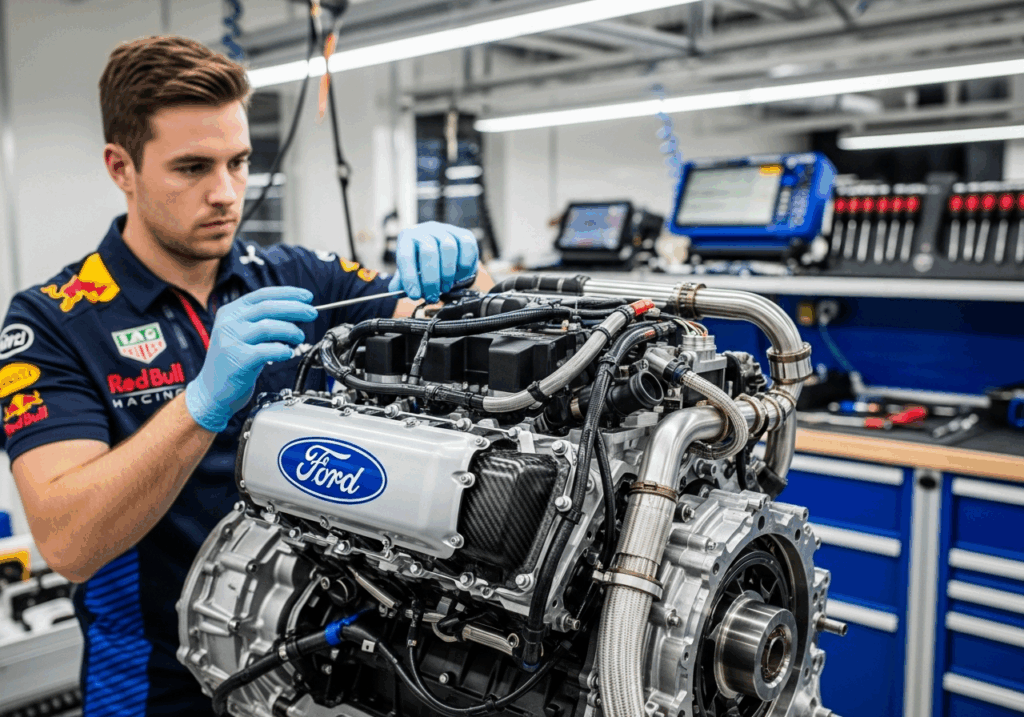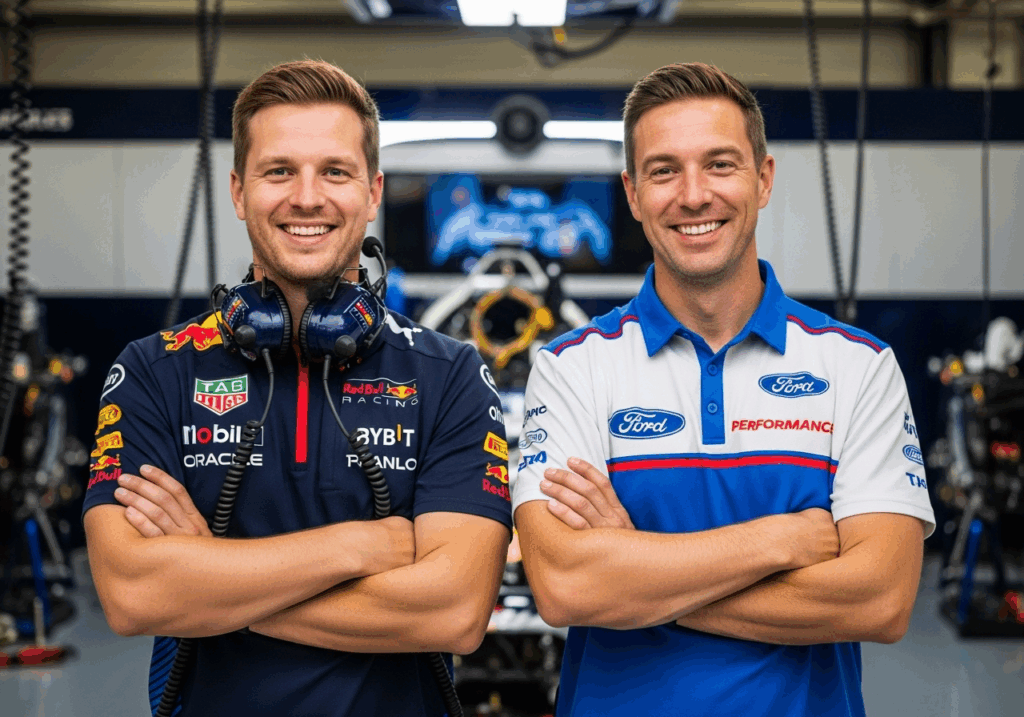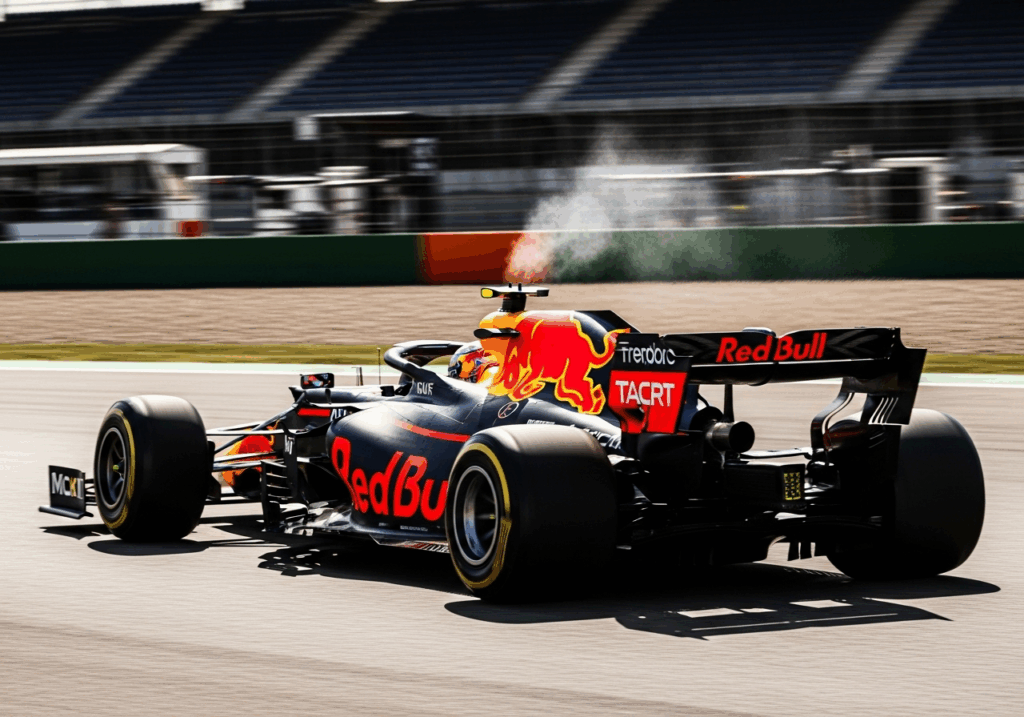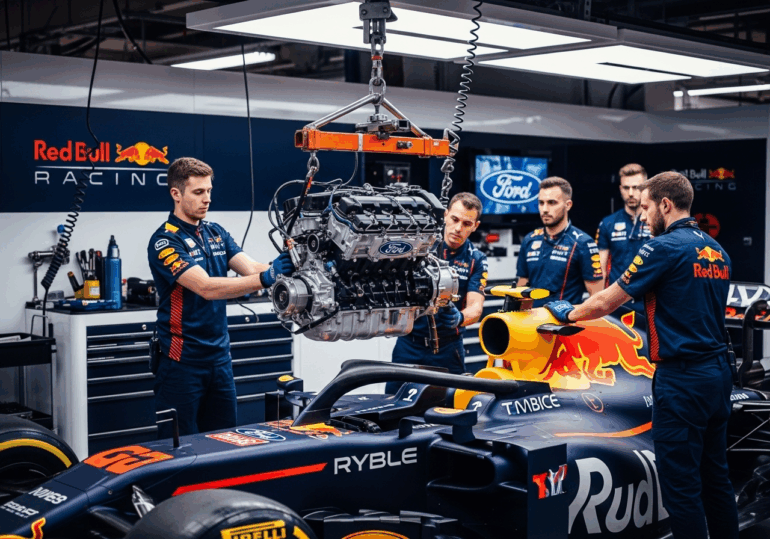Red Bull is preparing a historic turning point for the next season with its 2026 engine.
The Austrian team is developing a fully in-house engine for the first time. And they will be doing it in partnership with Ford. Engineers claim that the 2026 Red Bull engine could reshape the F1 hierarchy entirely.
Why is Red Bull betting so much on this 2026 engine?
Since Honda’s gradual exit, Red Bull has wanted full control of its powertrain. The team established Red Bull Powertrains in Milton Keynes. They are actually aiming for complete independence in 2026.

The partnership with Ford also combines thermal expertise and electric know-how. And it is all within a completely revamped regulatory framework. This project is more than a technical change, it’s also a declaration of independence.
How did Ford and Red Bull design the 2026 engine?
Ford handles battery development, hybrid systems, and energy management. Meanwhile, Red Bull focuses on the thermal side and overall integration. This unique duo merges the experience of a historic manufacturer with the boldness of a world champion team. According to Technical Director Pierre Waché, internal results are “very, very promising.”
Could this partnership redefine the F1 hierarchy?
If the 2026 Red Bull engine delivers, the current hierarchy could be turned upside down. Mercedes’ 2014 example shows how a technological advantage can dominate for years. Red Bull now hopes to replicate that success in its own way. The team relies on software innovation as well as mechanical power.

Will the 2026 engine by Red Bull meet the challenges?
F1 in 2026 will demand a greener powertrain, with more electricity and less thermal fuel. This radical shift makes engineers’ work more complex. Waché admits the aerodynamics are still the biggest unknown, but Red Bull seems to have found a promising balance.
Concerns over the 2026 chassis and aerodynamics
The new aerodynamic rules offer more freedom but also more risks. “There’s a lot to explore, and it’s hard to know what other teams will do,” says Waché. The technical department is therefore working on two fronts. More precisely, maintaining current performance and anticipating future needs.



How is the 2025 season preparing the 2026 revolution?
Recent 2025 progress, which includes multiple Max Verstappen victories, reinforces Red Bull’s trajectory. The team gathers valuable insights on mechanical behavior and driver needs and feeds directly into the 2026 engine development. This approach helps avoid a sudden technical gap between seasons.
Can Red Bull surprise us next year?
The Red Bull-Ford engine remains surrounded by mystery for now, but early signals show confidence, consistency, and ambition. Even as Mercedes and Ferrari work in secret, Red Bull aims to strike hard from the first race. As Pierre Waché puts it: “There’s always an element of the unknown. We need to find the right direction, but we move forward with confidence.”


